What are the features that make for the best 165Hz monitor? Factors like faster response times, low input lag, and variable refresh rate combine well with the ultra-high refresh rate on the best monitors to create a top-notch visual experience. These monitors offer a wide range of screen resolution options and display sizes. This makes it easy to find a screen size that fits your gaming playstyle or the amount of real estate available on your desk.
Plus, with features like a curved design, ultrawide configuration, variable picture modes, and plenty of configuration options, 165Hz monitors are a comprehensive display technology solution well-suited for your home office or gaming setup. Remember that the best 4K 144Hz monitors on the market still offer a good gaming experience. Continue reading to learn more about selecting the best 165Hz gaming monitors for your needs.
Top 165Hz Monitors
#1 AOC C24G1A 24-inch Curved Gaming Monitor
Award: TOP PICK
WHY WE LIKE IT: This gaming display has wide viewing angles, a highly versatile stand, and features that help prevent eye irritation over long-term use.
- Impressive refresh rate for super smooth motion
- Wide viewing angles
- Highly adjustable stand
- No support for HDR content
The AOC C24G1A is an entry-level 24-inch gaming monitor with a Full HD screen and an impressive 165Hz refresh rate for super-smooth motion. The display is also curved to deliver an immersive viewing experience, and its stand is height and tilt adjustable to provide an optimum viewing experience. The display also has wide viewing angles and features FreeSync Premium Technology to prevent screen stuttering when gaming. Unfortunately, it does not support HDR content.
The display offers support for a wide variety of connectivity options, as it comes with a VGA port, a Display Port 1.2, and two HDMI 2.0 ports. The display has screw holes on its rear that make it ready for VESA mounting, and on its front, top and side bezels, it has very thin borders to give it a sleek feel. The display is also flicker-free and boasts of low blue light technology to keep eye irritation at bay for players who enjoy marathon gaming sessions.
#2 Sceptre 25-inch Full HD Gaming Monitor
Award: HONORABLE MENTION
WHY WE LIKE IT: This display boasts excellent color reproduction and is also bright enough to ensure good visibility even in well-lit conditions.
- Exceptional color reproduction
- High refresh rate
- Impressive brightness
- Poor viewing angles
The 25-inch Sceptre gaming monitor delivers decent picture clarity thanks to its 1080p resolution, and with a 165Hz refresh rate, its motion processing is smooth enough to render fast action scenes without any motion blur. The display also boasts exceptional color quality, thanks to its 106% coverage of the sRGB color space. With a peak brightness level of 300 nits, the monitor also gets bright enough to maintain good visibility even in well-lit settings. Still, its mediocre viewing angles may discourage other buyers from purchasing it.
The display is also wall-mount ready thanks to the screw holes on its back, and with 3 HDMI ports, one DisplayPort 1.2, and an audio jack, the display also offers a wide range of connectivity. Its back cover comes ready for VESA wall mounting and features colorful LED lighting to create the perfect gaming ambiance.
#3 Acer KG251Q 24.5-inch Full HD Gaming Monitor
Award: BEST FOR FAST ACTION GAMING
WHY WE LIKE IT: This display handles motion exceptionally well and is therefore great for users who tend to engage in fast-action gaming. It is also pretty bright and delivers great sound for a monitor.
- Rapid response time for smooth fast action scenes
- Great screen brightness
- Thin top and side bezels
- Lack of support for HDR content
The Acer KG251Q is a 24.5-inch Full HD display that offers a rapid 0.6m response time for ultra-smooth motion rendering. The display also has a 165Hz refresh rate that keeps fast action scenes clear and a super bright screen that can get as bright as 400 nits. It’s got a decent array of inputs as it features one Display Port, one HDMI port, and one Digital Visual Interface (DVI) port. The stand that holds up the display also allows for adjustment through tilting, though its lack of support for HDR content may not impress some users.
Gamers who tend to spend a lot of time gaming might appreciate the eye care technologies that the display features since the monitor is adapted to reduce screen flickering and filter out blue light. Regarding its looks, the monitor’s top and side bezels are pretty thin, and its star-shaped stand allows for good stability without any chance of wobble. On its rear, the display comes with its very own 2 Watt speakers and an accessible array of conveniently placed controls on the front.
#4 BenQ Mobiuz 27-inch 1080p Gaming Monitor
Award: BEST FOR HDR GAMING
WHY WE LIKE IT: This display’s support for HDR content means that players will be able to enjoy vivid imagery when gaming, and its automatic brightness and color adjustment technology adapts it to different viewing conditions.
- High refresh rate
- Support for HDR content
- Automatic brightness and color adjustment
- Limited port selection
The BenQ EX2710S is a 27-inch gaming display that guarantees smooth gameplay thanks to its FreeSync Premium technology. The monitor’s design is characterized by sleek, triangular shaping, and its height and tilt adjustable stand allow users to easily adjust it to their viewing preferences. The display has an impressive 165Hz refresh rate for butter-smooth motion and a 1ms response time to render fast action scenes smoothly. However, its limited port selection may turn away some users.
The display’s stand-out feature is its ability to automatically adjust its brightness and color temperature based on its surroundings to deliver a comfortable viewing experience. This keeps away issues that come about from eye strain, and with support for HDR content, users will get to enjoy vivid color when gaming. Its audio processing is impressive thanks to its two 2.5 watt speakers and built-in Digital Sound Processor.
#5 Asus TUF 32-inch 1080p Curved Gaming Monitor
Award: BEST FOR ALL ROUND GAMING
WHY WE LIKE IT: This display has technology that makes it compatible with two of the most popular graphics cards so that users can connect it to any gaming CPU without issues.
- Great contrast
- Reduced motion blur
- Curved display delivers an immersive gaming experience
- Stand is not height adjustable
The 32-inch ASUS gaming monitor features a curved Full HD screen that delivers impressive picture clarity and a 165Hz refresh rate that keeps fast-action scenes smooth and clear. Its 1ms response time also minimizes motion blur, and thanks to FreeSync Premium Technology, the display does away with screen stuttering and choppy frame rates. Contrast is also pretty good due to its Shadow Boost technology, though its stand might put some off since it is not height adjustable.
The display’s use of Adaptive-Sync technology to work with NVIDIA GeForce Graphic Cards and FreeSync Technology to work with AMD Radeon graphic cards makes it pretty versatile, as users will be able to connect it to gaming CPUs that rely on either of the two. Its curved display also delivers an immersive gaming experience, and with Flicker-free technology, the display reduces eye strain for improved viewing comfort during marathon gaming sessions.
#6 Pixio PX248 Prime S 24-inch Gaming Monitor
Award: BEST FOR SMOOTH GAMEPLAY
WHY WE LIKE IT: This gaming display is an excellent choice for users that prioritize good color and super-smooth motion clarity.
- Wide color gamut for vivid colors
- Wide viewing angles
- Eye care technology for stress free marathon gaming
- Noticeable backlight bleed
The Pixio PX248 is a 24-inch gaming display with a Full HD screen and wide 178° viewing angles for optimum viewing. Gamers will enjoy a 1ms response time for good motion clarity and a high 165Hz refresh rate for smooth gaming transitions. It is also both FreeSync and G Sync compatible, so there won’t be any screen tearing or stutter during gameplay. The display renders color well, and with its wide color gamut, content appears vivid and more uniform. However, it does have noticeable backlight bleed in the screen’s corners.
Designwise, the display looks quite sleek, as its straight and thin lines seem to make up its design blueprint. It is also flicker-free and features low blue light technology to prevent eye strain. Its range of connectivity inputs is also good, as it comes with two HDMI ports, a DisplayPort 1.2, and an audio out port for private listening.
Beginner’s Guide to 165Hz Monitors
What Are 165Hz Monitors?
Simply put, a 165Hz computer monitor is a piece of display technology that receives a video signal from the computer, laptop, or gaming console to which it is connected. These products connect to your computer using a variety of different display cables like DisplayPort, HDMI, DVI, VGA, and USB-C. 165Hz monitors also typically feature a slim design with a built-in stand that holds up the entire device.
165Hz Monitors vs. Traditional Monitors
If you were to place a 165Hz monitor and a traditional monitor next to each other, you’d be hard-pressed to notice any differences between the two other than the usual design and form factor variances. This is because they both provide the same basic function. Even the best 1080P 60Hz monitors still provide reliable and consistent performance.
Both 165Hz gaming monitors and traditional computer displays connect to your computer in the same way, and they both receive video signals from your computer or gaming console and display them on the screen.
The difference between the two ultimately boils down to the refresh rate. In general, a monitor can offer anywhere between a 60Hz refresh rate to a 240Hz refresh rate. Screens in this category, however, provide a specific 165Hz refresh rate.
How 165Hz Monitors Work
Like most other computer displays, a 165Hz monitor utilizes either an LCD or LED panel to show information from your computer. Both LCD and LED panels use panels of glass to house a material called liquid crystal. This liquid crystal reacts to electrical currents and light to reproduce the image on-screen.
The light source used in LCD displays comes from cold cathode fluorescent lights (CCFLs), whereas LED displays to use light-emitting diodes (LEDs) for backlighting.
A monitor’s refresh rate refers to how many new images it can populate on the screen per second. This means that a 165Hz monitor can produce as many as 165 new images on the screen every second, which is faster than most computer monitors.
Do You Really Need a 165Hz Monitor?
Whether you’re getting a new monitor for the latest tech or simply to improve your overall gaming performance, a 165Hz monitor is an excellent choice. These monitors also typically offer faster response times, better image quality, and plenty of customizability, making them long-lasting solutions for anyone.
Is a 165Hz Monitor Worth Buying?
- You Are a Competitive Gamer: Gaming monitors with a 165Hz refresh rate are made specifically for competitive games. The fast refresh rate minimizes motion blur and screen tearing so you always get a smooth gaming experience.
- You Enjoy Watching Fast-Paced Movies on Your Computer: An inordinate amount of motion blur during action scenes can ruin the immersion and fun of most movies. So, if watching action movies and TV shows on your computer is your thing, then a 165Hz monitor is an excellent choice for you.
- You Want a Future-Proofed Monitor: Most modern video games can’t quite handle frame rates as high as 165Hz. However, it won’t always stay that way. Even though your 165Hz monitor will only be able to play games at a frame rate of 144 frames per second (FPS) for now, it will be ready for the next generation of gaming.
Why a 165Hz Monitor May Not Be For You
- You Are a Casual Gamer: While hardcore gamers need the best performance a monitor can provide, casual players might not want to spend the extra cash on something faster. If you don’t play competitive games, then a monitor with a 120Hz refresh rate is more than acceptable.
- You Want to Save Some Money: 165Hz monitors are typically more expensive than options with lower refresh rates. If you’re on a budget or simply don’t want to spend extra to get a faster refresh rate, these displays may not be the best pick for your needs.
How Long Will a 165Hz Monitor Last?
As noted earlier, 165Hz monitors use either LCD or LED display technology. The fluorescent lamps used in LCD panels don’t last as long as the individual light-emitting diodes in LED panels. However, both monitors should last you for years, even if used for up to eight hours a day, seven days a week.
In particular, experts like those at TechiExpert estimate an LCD lifespan to be anywhere from 30,000 to 60,000 usage hours, while an LED lifespan sits around 80,000 to 120,000 usage hours.
How to Choose the Best 165Hz Monitor
Before you hit the big-box electronics stores or online retailers, you should take some time to consider the features and functionalities that are most important to you. While 165Hz displays are mostly meant to be used as gaming monitors, there are additional features to consider.
The following questions can help you determine which key factors are most important to you consider while shopping for a new 165Hz monitor.
165Hz Monitor Key Factors to Consider
1. What screen size and resolution work best for a 165Hz gaming monitor?
It’s a given that a 165Hz refresh rate sits on the high end of gaming performance functionality. However, it won’t look nearly as good if you don’t pair it with the right screen size and resolution.
Resolution refers to the number of pixels present in the display. The more pixels that are present, the more detailed and crisper image quality you’ll get. For the most part, we recommend pairing a 165Hz display with a 4K resolution.
When it comes to screen size, that’s more of a subjective decision than anything else, as it depends on a variety of factors, such as the amount of desk space you have available or how far away from the monitor you plan on sitting. We’ve found that the sweet spot for gaming monitors lies in the 24-inch to the 27-inch screen size range. If that’s not big enough for you, though, consider a 32-inch monitor.
2. What panel technology is best for a 165Hz gaming monitor?
LCD and LED monitors offer one of three different panel technology options. This isn’t typically a feature the average consumer considers, but it’s actually very important when it comes to overall image quality and gaming performance.
Let’s take a closer look at each panel type:
- TN: If you value affordability and fast response times over rich colors and wide viewing angles, then a TN panel is best for you. These are the most affordable, and they commonly feature a 1ms response time. However, they suffer from poor color reproduction and narrow viewing angles.
- IPS: If you prefer wide viewing angles, vibrant colors, and a wide color gamut–even if they come at a higher cost–then an IPS panel is best for you. These are expensive panels with the best image quality around. However, they suffer from slower response times, especially when compared to TN and VA panels.
- VA: If you’re looking for a well-rounded mixture of color accuracy, wide viewing angles, fast response times, and affordability, then a VA panel is right for you. While they don’t perform the best in any of those categories, they give you more than enough performance for fast-paced games.
3. Do you really need to get a 165Hz monitor with adaptive sync technology?
With a 165Hz refresh rate monitor, it’s very likely that you’ll have the option of buying a product with adaptive sync technology. This gaming feature is made specifically to sync your monitor’s refresh rate with the frame rate of your computer’s graphics card.
You can purchase a monitor with either Nvidia G-Sync compatibility or AMD FreeSync compatibility. In general, it’s best to match your monitor’s adaptive sync compatibility with the brand of your computer’s graphics card.
4.Should you consider purchasing a curved gaming monitor or ultrawide gaming monitor?
Curved monitors are unique in the fact that they offer a curved display configuration instead of a flatscreen configuration.
A curved display can create a more immersive gaming experience since you won’t have to turn your head as much to see everything happening in your game. If you like a unique design aesthetic with greater immersion, then a curved monitor is a great choice.
You’ll also likely run into an ultrawide monitor at some point in your buying research. These screens give you a 21:9 aspect ratio instead of the 16:9 aspect ratio you see in conventional monitors.
If you like to multitask or run both your game and another application at the same time, then an ultrawide monitor is a great choice.
5. What display input ports are best for a 165Hz monitor?
Whether you’re purchasing a 165Hz monitor for gaming or other home office and professional applications, you’ll want to consider a display with a wide range of connectivity ports. The more ports your monitor offers, the better.
Of course, you’ll want the ports on your monitor to match up with the ports on your computer. In general, you’ll be good with a monitor that offers one or more of the following ports:
- HDMI 1.4 for casual use
- HDMI 2.0 or HDMI 2.1 for gaming
- DisplayPort 1.4 for gaming
- USB-C for enhanced user-friendliness
You may also want to consider a monitor with an audio jack so you can connect to external speakers or gaming headsets. However, if you don’t have external speakers, purchasing a monitor with built-in speakers is also a good choice.

![Best 165Hz Monitors in [year] 1 best 165hz monitor](https://www.gadgetreview.dev/wp-content/uploads/best-165hz-monitor.jpg)


![Best 165Hz Monitors in [year] 2 AOC C24G1A 24' Curved Frameless Gaming Monitor, FHD...](https://m.media-amazon.com/images/I/51mabOQapZL._SL160_.jpg)
![Best 165Hz Monitors in [year] 3 Sceptre 25' Gaming Monitor 1920 x 1080p up to 165Hz 1ms...](https://m.media-amazon.com/images/I/51PbeJtDWUL._SL160_.jpg)
![Best 165Hz Monitors in [year] 4 acer KG251Q Jbmidpx 24.5” Full HD (1920 x 1080)...](https://m.media-amazon.com/images/I/51pdP2yIkgL._SL160_.jpg)
![Best 165Hz Monitors in [year] 10 Our #4 Pick is the BenQ Mobiuz 27-inch 1080p Gaming Monitor](https://m.media-amazon.com/images/I/51E63+hTnvL._SL160_.jpg)
![Best 165Hz Monitors in [year] 11 Our #5 Pick is the Asus TUF 32-inch 1080p Curved Gaming Monitor](https://m.media-amazon.com/images/I/41h+A96VmBL._SL160_.jpg)
![Best 165Hz Monitors in [year] 12 Our #6 Pick is the Pixio PX248 Prime S 24-inch Gaming Monitor](https://m.media-amazon.com/images/I/51Yvb7WN0eL._SL160_.jpg)







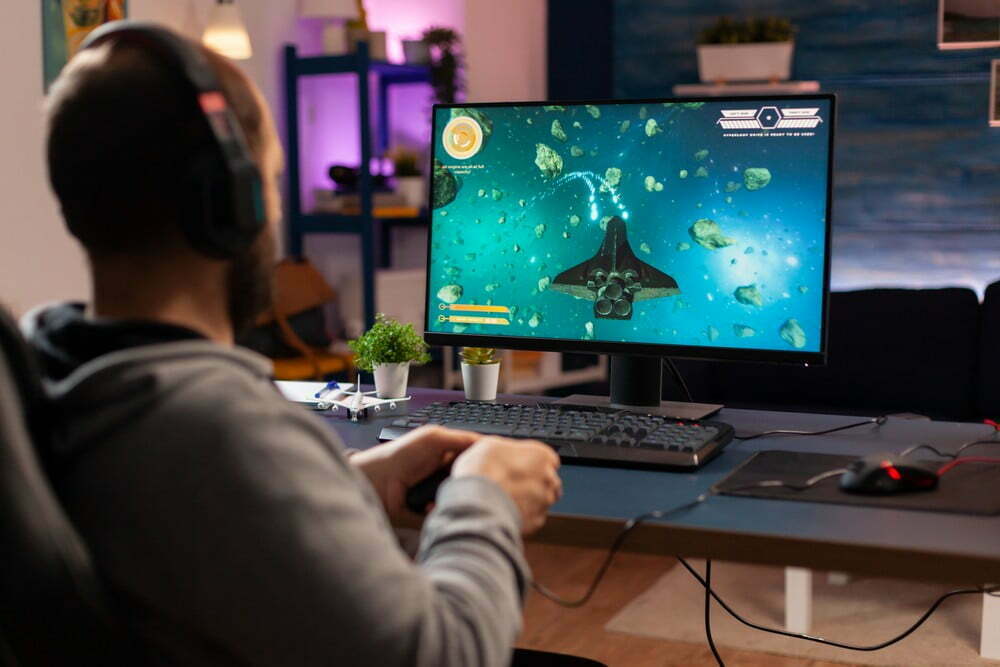





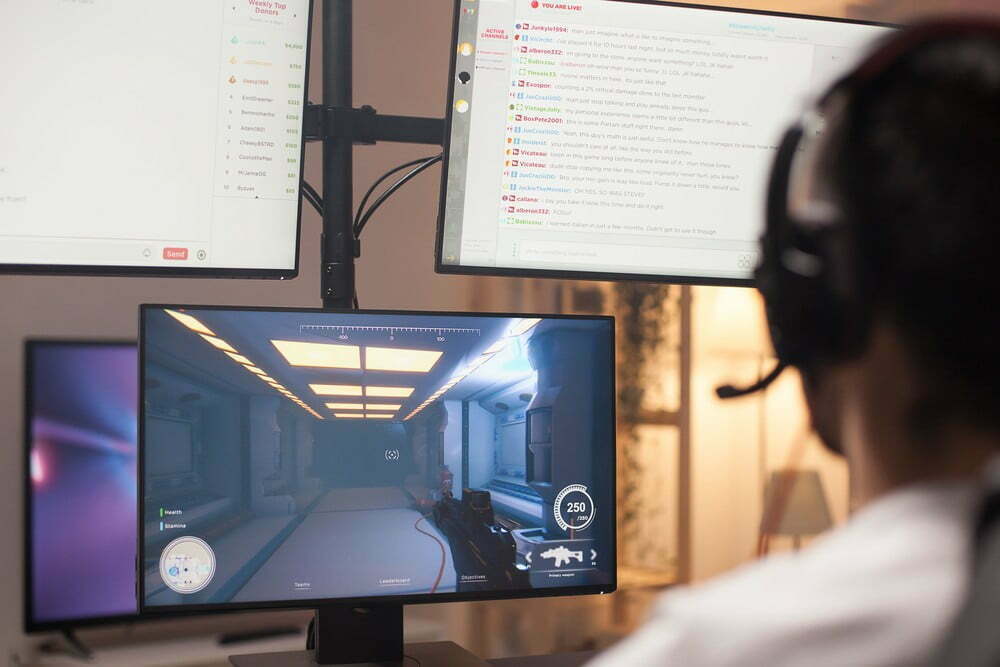
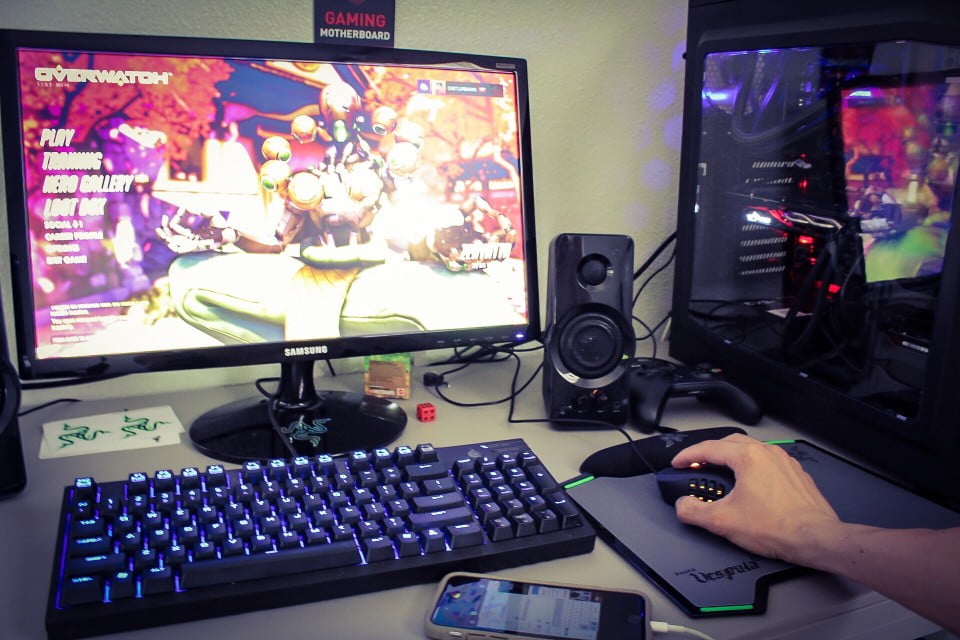

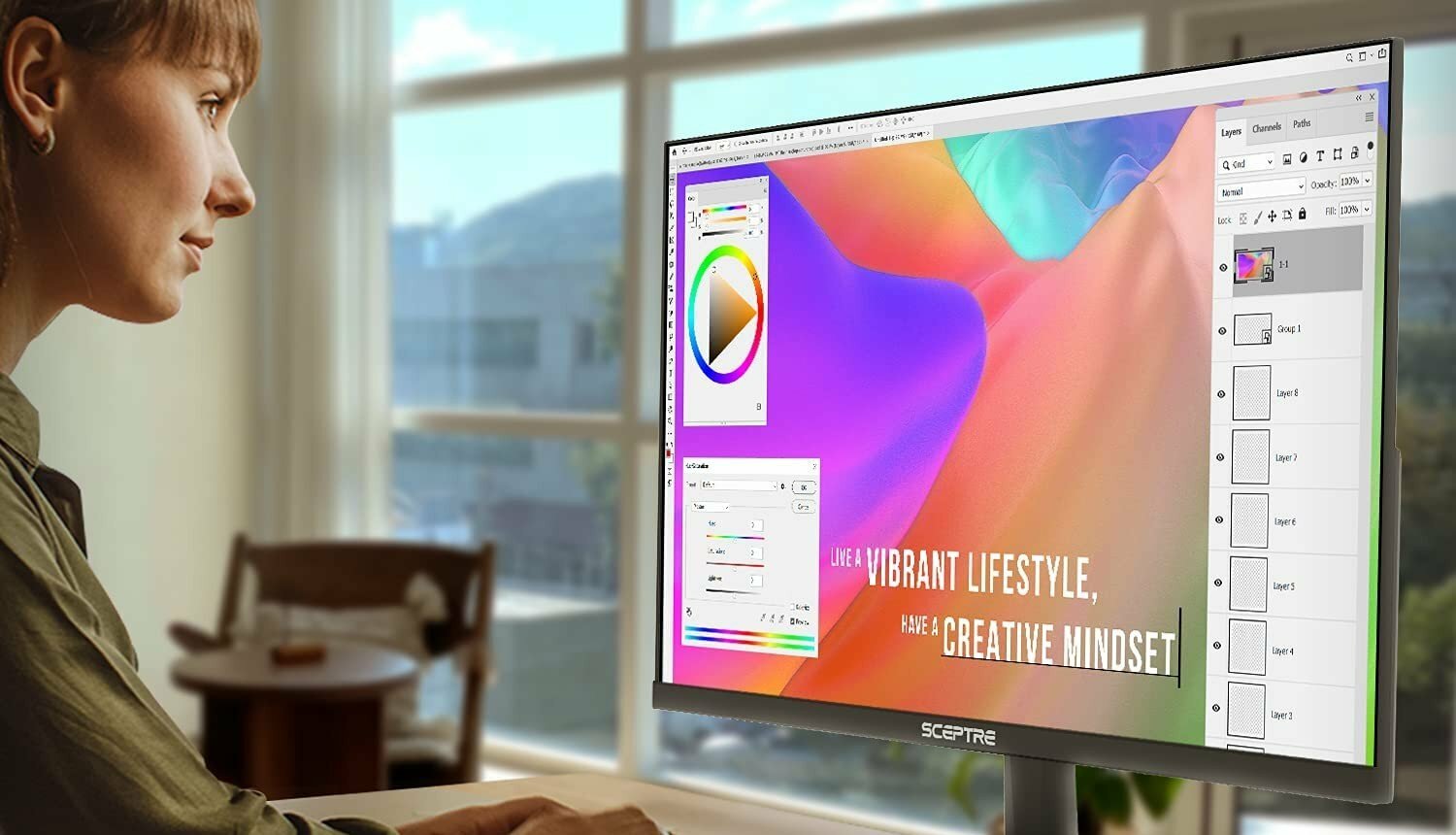


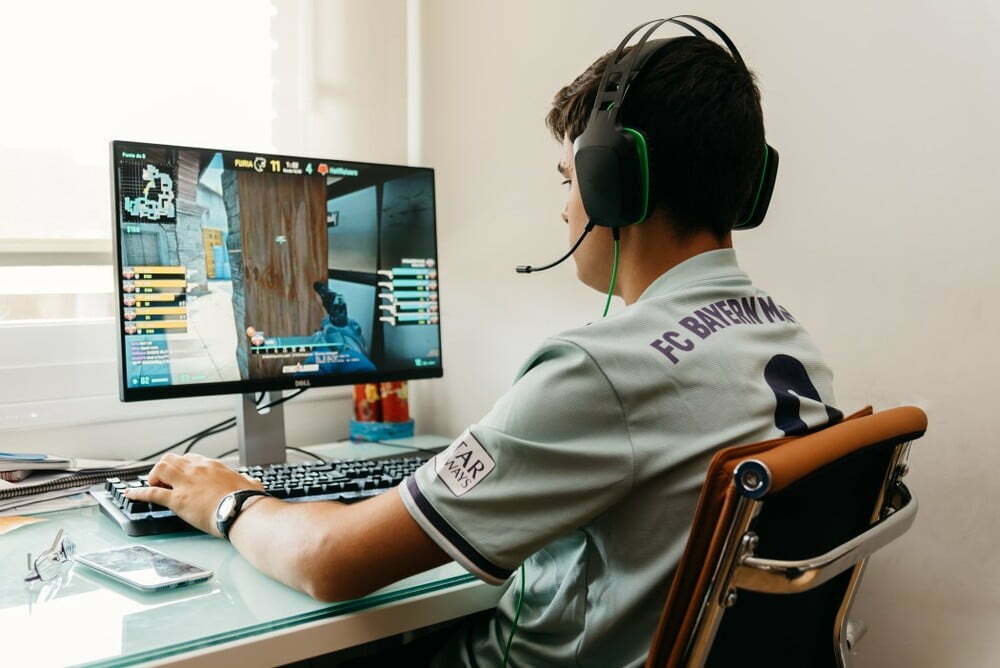


![Best 27 Inch Computer Monitor in [year] 33 Best 27 Inch Computer Monitor in 2026](https://www.gadgetreview.dev/wp-content/uploads/how-to-buy-the-best-computer-monitor.jpg)
![Best BenQ Monitors in [year] 34 Best BenQ Monitors in 2026](https://www.gadgetreview.dev/wp-content/uploads/best-benq-monitor-image.jpg)
![Best ASUS Monitors in [year] 35 Best ASUS Monitors in 2026](https://www.gadgetreview.dev/wp-content/uploads/best-asus-monitor-image.jpg)
![Best Dell Monitors in [year] 36 Best Dell Monitors in 2026](https://www.gadgetreview.dev/wp-content/uploads/best-dell-monitor-image.jpg)
![Best HP Monitors in [year] 37 Best HP Monitors in 2026](https://www.gadgetreview.dev/wp-content/uploads/best-hp-monitor-image.jpg)
![Best Lenovo Monitors in [year] 38 Best Lenovo Monitors in 2026](https://www.gadgetreview.dev/wp-content/uploads/best-lenovo-monitor-image.jpg)
![Best ViewSonic Monitors in [year] 39 Best ViewSonic Monitors in 2026](https://www.gadgetreview.dev/wp-content/uploads/best-viewsonic-monitor-image.jpg)
![Best Gigabyte Monitors in [year] 40 Best Gigabyte Monitors in 2026](https://www.gadgetreview.dev/wp-content/uploads/best-gigabyte-monitor-image.jpg)
![Best Monitors for PS4 Pro Gaming in [year] 41 Best Monitors for PS4 Pro Gaming in 2026](https://www.gadgetreview.dev/wp-content/uploads/best-monitors-for-ps4-pro-image.jpg)
![Best Monitor for Xbox Series X in [year] 42 Best Monitor for Xbox Series X in 2026](https://www.gadgetreview.dev/wp-content/uploads/best-monitor-for-xbox-series-x-image.jpg)
![Best Acer Monitors in [year] 43 Best Acer Monitors in 2026](https://www.gadgetreview.dev/wp-content/uploads/best-acer-monitor-image.jpg)
![Best MSI Monitors in [year] 44 Best MSI Monitors in 2026](https://www.gadgetreview.dev/wp-content/uploads/best-msi-monitor-image.jpg)
![Best SAMSUNG Monitors in [year] 45 Best SAMSUNG Monitors in 2026](https://www.gadgetreview.dev/wp-content/uploads/best-samsung-monitor-image.jpg)
![Best LG Monitors in [year] 46 Best LG Monitors in 2026](https://www.gadgetreview.dev/wp-content/uploads/best-lg-monitor-image.jpg)
![Best AOC Monitors in [year] 47 Best AOC Monitors in 2026](https://www.gadgetreview.dev/wp-content/uploads/best-aoc-monitor-image.jpg)
![Best Philips Monitors in [year] 48 Best Philips Monitors in 2026](https://www.gadgetreview.dev/wp-content/uploads/best-philips-monitors-image.jpg)
![Best Monitors For PUBG in [year] 49 Best Monitors For PUBG in 2026](https://www.gadgetreview.dev/wp-content/uploads/best-monitor-for-pubg-image.jpg)
![Best Stream Decks in [year] 50 Best Stream Decks in 2026](https://www.gadgetreview.dev/wp-content/uploads/best-stream-deck-image.jpg)
![Best Monitors for Streaming in [year] 51 Best Monitors for Streaming in 2026](https://www.gadgetreview.dev/wp-content/uploads/best-monitor-for-streaming-image.jpg)
![Best Monitors For Flight Simulator in [year] 52 Best Monitors For Flight Simulator in 2026](https://www.gadgetreview.dev/wp-content/uploads/best-monitor-for-flight-simulator-image.jpg)



















